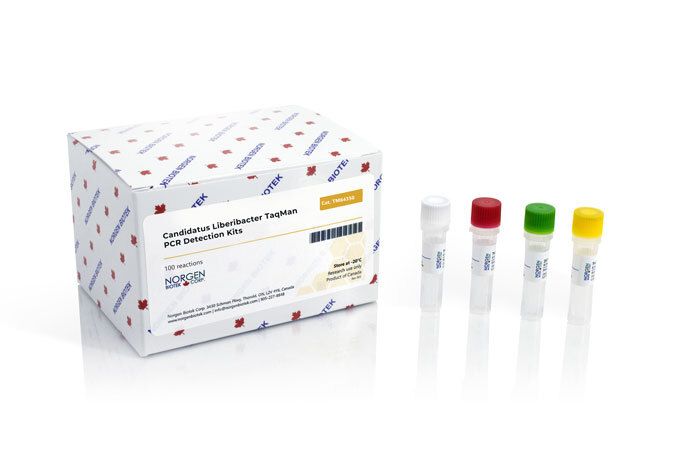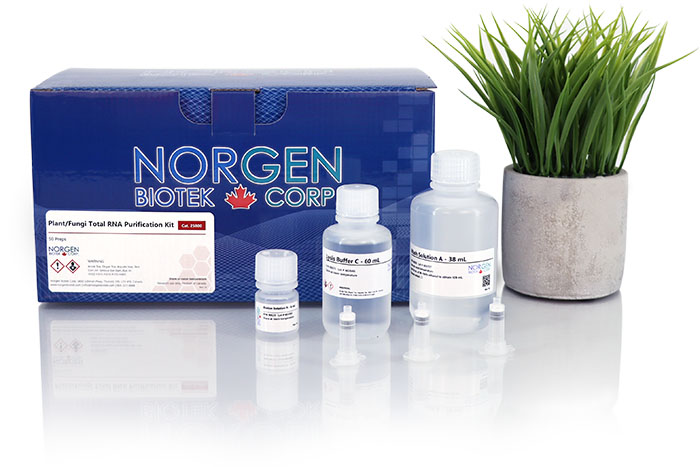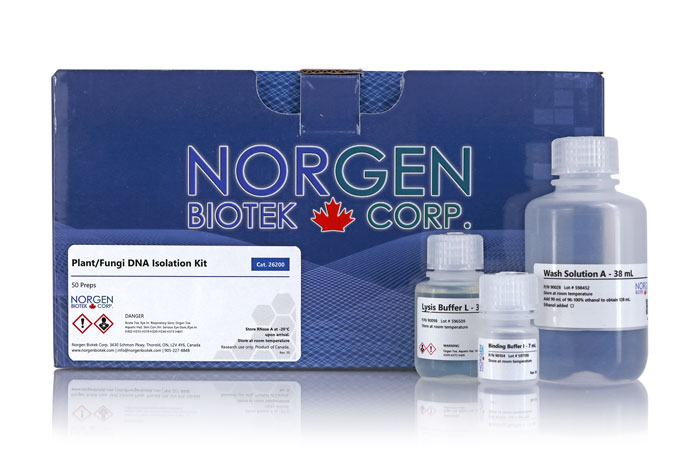Candidatus Liberibacter TaqMan PCR Detection Kits

For research use only and NOT intended for in vitro diagnostics.
Lyophilized
Version Available Here
Save on Shipping
Candidatus Liberibacter TaqMan PCR Detection Kits
Register today to receive an exclusive 15% off* on your first order.
Features and Benefits
- Detection kits for the Candidatus Liberibacter
- Available in TaqMan format for analysis
Citrus Huanglongbing (HLB), previously known as citrus greening, constitutes the most economically devastating disease of citrus worldwide, being present in around 40 countries. HLB causes severe symptoms, depending on the age and the number of infections per plant. The disease is caused by the fastidious gram-negative α-proteobacteria Candidatus Liberibacter asiaticus (Las), Ca. L. africanus, and Ca. L. americanus as well as some phytoplasmas. The bacterium propagates within the phloem of citrus plants producing die-back, yellow shoots, blotchy mottles on leaves, and off-tasting and malformed fruit. The ‘Ca. Liberibacter’ bacterium is transmitted by the psyllids Trioza erytreae in Africa and Diaphorina citri in Asia and the Americas. A variety of diagnostic methods have been developed to supplement or confirm field-based diagnosis of HLB however, end-point PCR-based and real-time quantitative methods are currently the most widely used methods in plant and insect tissues to detect and identify HLB- Liberibacters.
Click to expand options
- Ready to use format, including Master Mix for the target and PCR control to monitor for PCR inhibition and validate the quality
- Specific Primer and Probe mix for the pathogen/virus/viroid of interest
- Primer and Probe mix
- Positive and negative control to confirm the integrity of the kit reagents
- Specific Primer/Probe mix and Positive Control for the pathogen/virus/viroid of interest
- Nuclease-free water
- Can be used together with Norgen’s PCR Master Mix (#28007) or customer supplied master mix
For research use only and NOT intended for in vitro diagnostics.
Details
Supporting Data
TaqMan PCR Kit - Figure 1. Example of TaqMan PCR Positive result. Both PCR signals above the baseline from FAM and HEX channel indicate the successful PCR.
TaqMan PCR Kit - Figure 2. Example of TaqMan PCR Negative result. No target DNA was detected in FAM channel but amplification signal from HEX indicates the successful PCR.
TaqMan PCR Kit - Figure 3. Example of TaqMan PCR inhibition result. No signal from both FAM and HEX channel was detected. It is suggested to repeat the sample preparation using recommended kit for DNA purification.
Storage Conditions and Product Stability
All kit components can be stored for 2 years after the date of production without showing any reduction in performance.
All kit components should be stored at -20°C upon arrival. Repeated thawing and freezing (> 2 x) of the Master Mix and Positive Control should be avoided, as this may affect the performance of the assay. If the reagents are to be used only intermittently, they should be frozen in aliquots.
| Component | Cat. TM64350 (100 preps) | Cat. TM64310 (100 preps) |
|---|---|---|
| MDx TaqMan 2X PCR Master Mix | 2 x 700 μL | - |
| Candidatus Liberibacter Primer & Probe Mix | 280 μL | 280 μL |
| Candidatus Liberibacter Positive Control | 150 μL | 150 μL |
| Nuclease-Free Water (Negative Control) | 1.25 mL | 1.25 mL |
| Product Insert | 1 | 1 |


